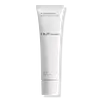What's inside
What's inside
 Key Ingredients
Key Ingredients

No key ingredients
 Benefits
Benefits

 Concerns
Concerns

 Ingredients Side-by-side
Ingredients Side-by-side

Water
Skin ConditioningPropanediol
SolventGlycolipids
Skin ConditioningCurcuma Longa Root Extract
MaskingCrocus Sativus Flower Extract
MaskingEvodia Rutaecarpa Fruit Extract
Skin ConditioningPrunus Armeniaca Fruit Extract
Skin ConditioningSodium Cocoyl Glycinate
CleansingMaltooligosyl Glucoside
Skin ConditioningHydrogenated Starch Hydrolysate
HumectantDiethylhexyl Syringylidenemalonate
Skin ProtectingGlycerin
HumectantCaprylic/Capric Triglyceride
MaskingLactic Acid
BufferingCitric Acid
BufferingPhenoxyethanol
PreservativePotassium Sorbate
PreservativeDehydroacetic Acid
PreservativeBenzyl Alcohol
PerfumingSodium Benzoate
MaskingCI 14700
Cosmetic ColorantWater, Propanediol, Glycolipids, Curcuma Longa Root Extract, Crocus Sativus Flower Extract, Evodia Rutaecarpa Fruit Extract, Prunus Armeniaca Fruit Extract, Sodium Cocoyl Glycinate, Maltooligosyl Glucoside, Hydrogenated Starch Hydrolysate, Diethylhexyl Syringylidenemalonate, Glycerin, Caprylic/Capric Triglyceride, Lactic Acid, Citric Acid, Phenoxyethanol, Potassium Sorbate, Dehydroacetic Acid, Benzyl Alcohol, Sodium Benzoate, CI 14700
Water
Skin ConditioningSodium Acrylates Crosspolymer-2
AbsorbentGlycerin
HumectantButylene Glycol
HumectantDipropylene Glycol
Humectant1,2-Hexanediol
Skin ConditioningC12-14 Pareth-12
EmulsifyingCaprylyl Glycol
EmollientEctoin
Skin ConditioningCarbomer
Emulsion StabilisingTromethamine
BufferingEthylhexylglycerin
Skin ConditioningMeteorite Powder
Skin ConditioningSodium Hyaluronate
HumectantCitrus Limon Fruit Extract
MaskingPseudanabaena Galeata Extract
Skin ConditioningCI 19140
Cosmetic ColorantCI 42090
Cosmetic ColorantWater, Sodium Acrylates Crosspolymer-2, Glycerin, Butylene Glycol, Dipropylene Glycol, 1,2-Hexanediol, C12-14 Pareth-12, Caprylyl Glycol, Ectoin, Carbomer, Tromethamine, Ethylhexylglycerin, Meteorite Powder, Sodium Hyaluronate, Citrus Limon Fruit Extract, Pseudanabaena Galeata Extract, CI 19140, CI 42090
 Reviews
Reviews

Ingredients Explained
These ingredients are found in both products.
Ingredients higher up in an ingredient list are typically present in a larger amount.
Glycerin is already naturally found in your skin. It helps moisturize and protect your skin.
A study from 2016 found glycerin to be more effective as a humectant than AHAs and hyaluronic acid.
As a humectant, it helps the skin stay hydrated by pulling moisture to your skin. The low molecular weight of glycerin allows it to pull moisture into the deeper layers of your skin.
Hydrated skin improves your skin barrier; Your skin barrier helps protect against irritants and bacteria.
Glycerin has also been found to have antimicrobial and antiviral properties. Due to these properties, glycerin is often used in wound and burn treatments.
In cosmetics, glycerin is usually derived from plants such as soybean or palm. However, it can also be sourced from animals, such as tallow or animal fat.
This ingredient is organic, colorless, odorless, and non-toxic.
Glycerin is the name for this ingredient in American English. British English uses Glycerol/Glycerine.
Learn more about GlycerinWater. It's the most common cosmetic ingredient of all. You'll usually see it at the top of ingredient lists, meaning that it makes up the largest part of the product.
So why is it so popular? Water most often acts as a solvent - this means that it helps dissolve other ingredients into the formulation.
You'll also recognize water as that liquid we all need to stay alive. If you see this, drink a glass of water. Stay hydrated!
Learn more about Water